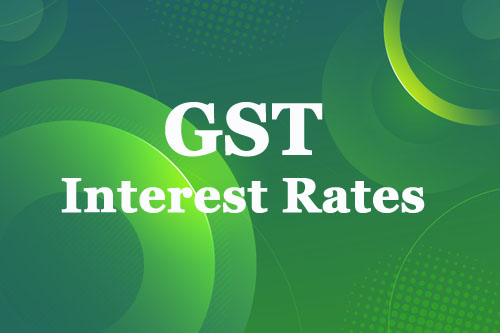Through GST, Government has tried to digitize entire tax system to make it user friendly and easily accessible for everyone. As the system is automated, it will be calculating interest and late fee in case of any default.
If any registered person “fails to pay the taxes” to government or deposits the taxes after the due dates, then the registered person has to pay the interest as prescribed under different sections of GST Acts. Similarly, if the registered person has “claimed excess input credit” or “claimed input credit without their eligibility”, in such scenario also the registered person will be liable for interest payment.
There can be multiple reasons where liability for payment of interest can arise. Defaults in payment of output tax, excess credit availed & reversal of credit are some of the examples. Under GST regime, there are 2 rates have been prescribed for levy of interest. Section 50(1), which deals with late payment of output tax, interest rate chargeable will be 18% p.a, and under section 50(3) which deals with excess or undue input credit interest payable will be @ 24% p.a.
a) Situation covered under section 50(1) of CGST Act:
Tax Deposited after due date:
If registered person has reported their correct output tax liability in return but fails to pay on or before date, then taxpayer will be liable to pay interest at the rate of 18% per annum. Such period of interest calculation will start from the next date of due date and will end on the date of payment.
Example: The registered person reported tax liability in his return of INR 10,00,000 for the month of August 2017 for which due date was 20 September 2017 but made the payment of INR 10,00,000 on 1 October 2018, here the registered person will be liable for interest for 11 days from 21 September to 1 October @18% per annum.
Output tax determined wrongly
If the registered person has under reported their output tax liability in return then they will be liable for interest @ 18%, whenever they or any officer finds that, registered person has short paid tax previously then he has to pay taxes along with interest of 18% per annum.
Example: Reason for such under reporting of liability can be that the registered person had forgot to incorporate one invoice in their return having tax liability of 2,00,000 and paid the tax liability as per return only.
In these cases, where taxpayer under reported their output tax liability then they have to pay interest @ 18% per annum1.
Input Credit wrongly availed
Whenever registered person availed Input credit wrongly then he has to pay interest @ 18% per annum from the date of such excess claim to the date of payment. Reasons for such excess claim can be Invoices received for having input credit of 200 (CGST+SGST) but the registered person claimed 400 (200+200) input credit.
Example: The registered person claimed input credit on food and beverage services whereas input credit on such services is not allowed as per section 17(5) of CGST act. In that case the registered person will be liable to pay interest @ 18% per annum from the date of input credit till the date of payment.
b) Situation covered under section 50(3) of CGST Act i.e. excess or undue Claim of Input Credit:
Whenever registered person availed excess Input credit on account of mismatch with actual inward supplies then he has to pay interest @ 24% per annum from the date of such excess claim to the
date of payment. Reasons for such excess claim can be that taxpayer didn’t receive the inward supplies but claimed input credit or supplies received in later months but claimed credit in current which is again will mis-match with vendors information for same month. Higher rate of interest is prescribed under that section is to avoid fake input credit without receiving actual supplies and to make the registered person disciplined to report their correct inwards supplies, which is match with vendors records. Hence whenever input credit doesn’t match with information submitted with vendor then higher rate of 24% per annum will be applicable.
Example: If recipient of supplies avails the input credit on the basis of actual supplies received but the supplier didn’t report such invoices in their GSTR 1, which results excess claim of input in the books of recipient, this case would be the case of Section 50(3), hence recipient will be liable for interest @24% per annum.
Other scenario where interest liability can arise and corresponding interest rate
- Reversal of input tax credit in the case of non-payment of consideration to supplier within 180 days from the date of invoices, Interest rate will be 18% per annum, the Interest period will start from the date of availing credit on such supplies till the date when the amount added to the output tax liability
- Inputs or capital goods that are not returned to the principal within year or 3 years respectively from the date of received by the Job worker, Interest rate will be 18% per annum, the Interest period will start from the date of delivery challan issued to the Job worker by the Principal till the date of reporting in output liability
- Any other defaults for short payment/non-payment or erroneously refunded, Interest rate will be 18% per annum for default
- If the registered person was required to pay IGST but wrongly paid CGST/SGST or vice versa then it will not be treated as default, hence interest liability will not
1 Basis for calculation of days will remain same as mentioned in above example.
